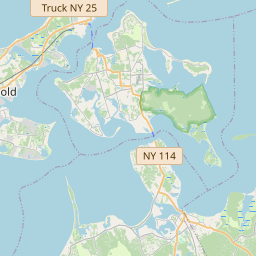American Revolution Veterans Memorial
Historical marker location:






1765: The Stamp Act is passed by the British Parliament, imposing a tax on American colonists for various printed materials. This sparks widespread protests and resistance among the colonists.
1770: The Boston Massacre occurs when British soldiers fire on a crowd of American colonists in Boston, resulting in the death of five colonists. The event further escalates tensions between the colonists and British authorities.
1773: The Boston Tea Party takes place as colonists, disguised as Native Americans, dump tea from British East India Company ships into Boston Harbor in protest against the Tea Act.
1774: The First Continental Congress convenes in Philadelphia. Delegates from twelve of the thirteen colonies gather to discuss grievances against British policies and plan a united response.
1775: The Battles of Lexington and Concord mark the beginning of armed conflict between British troops and American colonial militia. The "shot heard 'round the world" ignites the Revolutionary War.
1776: On July 4, the Second Continental Congress adopts the Declaration of Independence, drafted primarily by Thomas Jefferson. The document asserts the colonies' independence from Britain and outlines the principles of individual rights and self-government.
1777: The American victory at the Battle of Saratoga in New York proves to be a turning point in the war. It convinces the French to openly support the American cause and enter the war as allies.
1778: The Treaty of Alliance is signed between the United States and France, formalizing their military alliance. France provides crucial support to the American forces, including troops, naval assistance, and financial aid.
1781: The Siege of Yorktown takes place in Virginia, where combined American and French forces, led by General George Washington and French General Rochambeau, successfully trap British General Cornwallis and his troops. Cornwallis surrenders on October 19, effectively ending major hostilities in the Revolutionary War.
1783: The Treaty of Paris is signed, formally ending the American Revolutionary War. Great Britain recognizes the independence of the United States and establishes its boundaries. The treaty also grants fishing rights to American fishermen in the waters off Newfoundland and Nova Scotia.
1787: The Constitutional Convention convenes in Philadelphia to draft a new constitution to replace the Articles of Confederation, which proved ineffective in governing the newly independent nation.
1788: The United States Constitution is ratified by the required number of states and goes into effect. It establishes a strong federal government with separate branches and a system of checks and balances.
1789: George Washington is inaugurated as the first President of the United States, and the new federal government is established in New York City.
This timeline provides a general overview of the major events during the American Revolution, but it is important to note that there were numerous other battles, diplomatic negotiations, and developments that occurred during this period.
The first American chess tournament was held in New York City in 1843, and it was won by a 21-year-old named Paul Morphy.
During the American Revolutionary War, Suffolk County played a significant role. The county saw numerous battles and skirmishes, and the region served as a base for both American and British forces. After the war, the county experienced rapid growth as agriculture and maritime trade flourished. The early 19th century witnessed the rise of shipbuilding, fishing, and whaling industries, with towns like Greenport and Sag Harbor becoming significant maritime hubs.
In the mid-19th century, the construction and expansion of railroads transformed Suffolk County into a popular summer resort destination for wealthy New York City residents. The opening of the Long Island Rail Road in 1844 allowed for easier access to the county's picturesque beaches and rural countryside. This era also marked the growth of suburban development, as more people sought to settle in Suffolk County and commute to the city.
In recent decades, Suffolk County has undergone further development and diversification. The region's economy has expanded beyond agriculture and maritime industries, with a focus on sectors such as healthcare, education, technology, and tourism. The county also faces challenges such as population growth, transportation issues, and environmental concerns, particularly regarding coastal erosion and water quality. Overall, Suffolk County remains an important part of Long Island's history, boasting a vibrant past and a thriving present.
Suffolk County Timeline
This timeline provides a concise overview of the key events in the history of Suffolk County, New York.
- 1640 - English settlers from New Haven, Connecticut, purchase land from local Native Americans and establish the first permanent European settlements in Suffolk County.
- 1683 - Suffolk County is officially formed as one of the twelve original counties of the Province of New York.
- 1692 - Witch trials occur in the town of East Hampton, resulting in the execution of three women accused of practicing witchcraft.
- 1792 - Suffolk County splits into two separate counties: Suffolk County and Queens County.
- 1812 - The War of 1812 begins, leading to a wave of British attacks on Suffolk County's coastal towns and shipping industries.
- 1868 - The Long Island Rail Road expands into Suffolk County, connecting it to New York City and spurring population growth and economic development.
- 1898 - Suffolk County's population reaches 150,000, with agriculture, fishing, and tourism as its primary industries.
- 1938 - The "Long Island Express" hurricane devastates Suffolk County, causing widespread destruction and loss of life.
- 1963 - Suffolk County Community College is established, providing accessible higher education to local residents.
- 1978 - The notorious "Son of Sam" serial killer, David Berkowitz, is arrested in Suffolk County.
- 1997 - Suffolk County approves the preservation of 10,000 acres of open space, protecting the region's natural resources and scenic beauty.